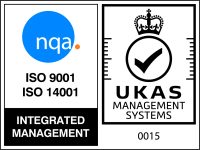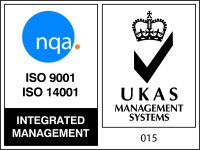The Importance of Product Dilution: Impact on Performance, Efficiency, Cost and Safety
The proper use of chemical cleaning products and solutions is part and parcel of a cleaner’s role. This, of course, includes understanding the finer points of product dilution. When undertaken carefully and correctly, this process offers considerable benefits to both cleaning staff and their clients and can even safeguard the overall quality of a clean.
Why Dilute?
The act of diluting a product ensures that a cleaning solution is given the chance to efficiently kill bacteria. When it comes to overall performance, ISSA explains that cleaning chemicals are formulated to work best at certain dilution ratios. Too strong a solution can damage a surface while a weak solution may see staff waste time and effort on attempting to unsuccessfully clean an area with a product that is too diluted.
According to European Cleaning Journal, full efficiency – both in terms of manpower and the chemical itself – can only be achieved by diluting a solution to its correct ratio. Bearing both this and the often significant financial outlay involved in purchasing these solutions, ISSA notes that following the correct dilution process can help to save money by ensuring that no product is wasted. Finally, when it comes to safety, CleanLink reiterates that correct dilution procedures and methods can help to preserve the well-being of staff who handle chemical solutions and, as ISSA explains, that of customers and clients.
Beyond the “Glug-Glug” Method: Options for Dispensing
Those within the cleaning industry will be aware of a process of mixing referred to as the “glug-glug” method. This alludes to the haphazard combining of chemicals, done without the knowledge, aids and benefits of careful pre-measuring. While it is acknowledged that this was formerly a known method of dispensing cleaning solutions, it is also now understood that it can seriously compromise the overall performance of a product. Likewise, this method has knock-on implications for the efficiency of a solution as well as on cost and safety, as reiterated by The Standard, the magazine of the British Institute of Cleaning Science.
Thankfully, there are now more reliable options when it comes to dispensing. CleanLink highlights the huge array of dispensation systems now available to cleaners, facilities management teams and janitorial staff. In addition to wall-mounted chemical proportioners, there are pumps and containers that include in-built measuring systems. In addition to these methods – which can have an impact on a cleaner’s efficiency, especially if there is just one dispensation point within a facility – pre-proportioned chemical packets are proving to be a popular choice within the industry. These portable packets can be mixed at any water source.
A Word on Manual Mixing
While there are many options for chemical dispensing systems on the market, it is worth noting that manual mixing can still be a viable option for cleaners and janitors. However – as with any other method of dispensing – manual mixing needs to be undertaken correctly and carefully. For those seeking to undertake this method of mixing, the United Kingdom’s Health and Safety Executive (HSE) offers clear guidance on best-practice procedures here and here.
As part of HSE’s key points, the body reminds cleaners to mix products in a spacious, well-ventilated area and to use protective personal equipment (PPE), as necessary. When it comes to liquid chemicals, HSE advises purchasing these in containers that allow for easy pouring. As for chemicals in powder form, the body explains that tablets and granules that can be easily scooped from wide containers are likewise the preferred option during manual mixing. HSE states that cleaners should add a concentrated liquid to a diluting substance, be scrupulous with labelling and be cautious with products containing bleach and caustic soda. Finally, cleaners should check data safety cards and read product labelling during use.
From wall-mounted systems through to pre-proportioned packs and even manual mixing, there are a wide array of options when it comes to product dilution. With the benefits of dilution offering an overwhelmingly positive impact on the performance, efficiency, cost and safety of a clean, there’s no reason for cleaners to return to the uncertain, haphazard days of “glug-glug”.








